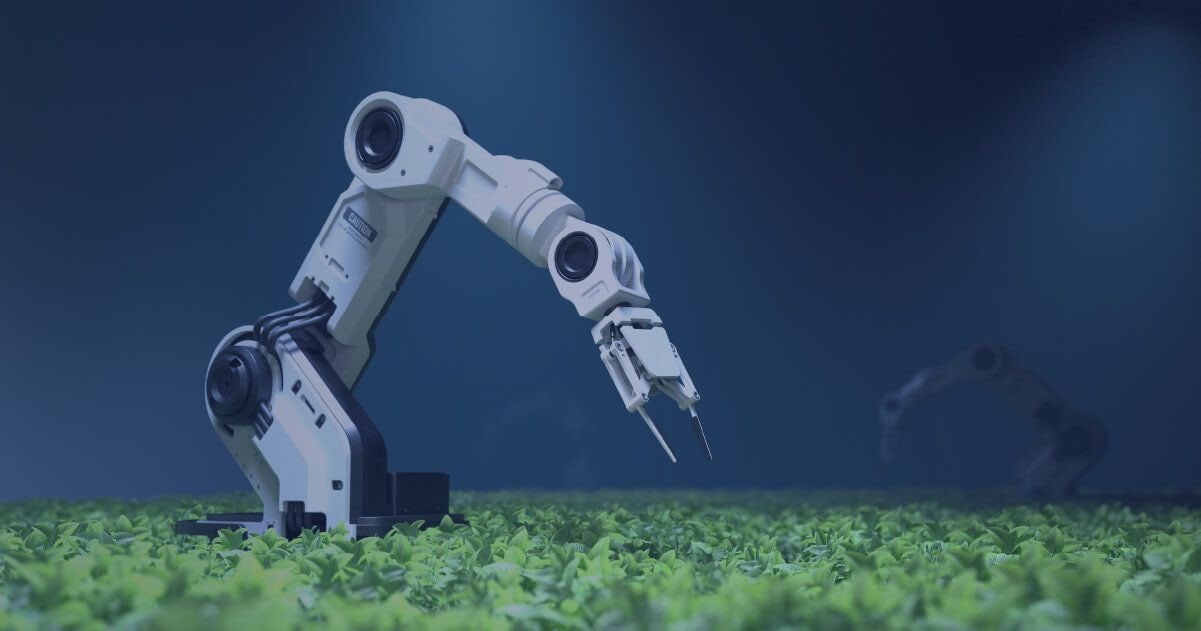The digitization of the manufacturing sector transformed how we manufacture products. This transition has been dubbed Industry 4.0, as it represents the fourth industrial revolution since the first revolution that introduced mechanization through water and steam power. The second industrial revolution used electricity to drive mass production and assembly lines, followed by the adoption of computers and automation in what is called the third industrial revolution.
The fourth industrial revolution – Industry 4.0 – takes this to the next level via integrating new technologies, including the Internet of Things (IoT), cloud computing and analytics, artificial intelligence (AI), and machine learning (ML) into production facilities and operations. The idea is to improve product manufacturing and distribute them more efficiently.
What exactly is Industry 4.0, and what benefits does it bring? Read this article to learn more about this powerful trend in the manufacturing industry.
Table of contents:
- Industry 4.0 in a nutshell
- What is a smart factory?
- 7 most important Industry 4.0 technologies
- Industry 4.0 today and tomorrow – summary
Industry 4.0 in a nutshell
Industry 4.0 refers to the digitization of manufacturing and related industries. It is a broad vision with a clear framework and reference architecture that involves bridging physical industrial assets and digital technologies in so-called cyber-physical systems.
IoT plays a key role here with its many components, from IoT platforms to Industrial IoT gateways, devices, etc. Cloud computing, AI, advanced data analytics, data lakes, and edge intelligence are all key enablers of Industry 4.0 as well.
Where does the concept of Industry 4.0 come from?
The first industrial revolution, which began in Britain in the late 18th century, used water and steam power to replace human and animal labor in manufacturing. Finished goods were built using machines instead of painstakingly produced by hand.
One century later, the second industrial revolution brought assembly lines and the use of oil, gas, and electric power to manufacturing. Telephone and telegraph technologies greatly enhanced communication during the second revolution.
The third industrial revolution began in the middle of the 20th century with computers, advanced telecommunications, and data analysis. The digitization of factories began with programmable logic controllers embedded into machinery that automated some business processes, collected data, and shared it across computer networks.
Industry 4.0, also known as the fourth industrial revolution, is characterized by increased automation and the use of smart machines and smart factories. Data-driven insights allow manufacturers to produce goods more efficiently and productively across the value chain.
Another benefit of Industry 4.0 is increased flexibility so that manufacturers can better meet customer demands using mass customization – ultimately seeking to achieve efficiency with, in many cases, a lot size of one. A smart factory can achieve greater information transparency and better decisions by collecting data from the factory floor and combining it with other enterprise operational data.
What is a smart factory?
Manufacturers are increasingly using embedded sensors and interconnected machinery that can collect big data. Data analytics allows manufacturers to investigate historical trends, identify patterns, and make better decisions.
Smart factories can gather data from other parts of the organization and their extended ecosystem of suppliers and distributors to create deeper insights via automation and data exchange. Manufacturers can make production decisions based on sales margins and personnel by looking at data from human resources, sales, or warehousing.
Then there's the complete digital representation of operations called a "digital twin." Networks within smart factories ensure interconnectivity, and real-time data collected from sensors, devices, and machines on the factory floor can be consumed and used immediately by other factory assets.
This data can also be shared across other components in the enterprise software stack, including enterprise resource planning (ERP) and other business management software to create a valuable feedback loop.
7 most important Industry 4.0 technologies
Cloud computing
Cloud computing is a cornerstone of any smart manufacturing strategy since connectivity and integration are imperative for the realization of Industry 4.0. Cloud computing also helps to process large amounts of data and reduce startup costs for small- and medium-sized manufacturers, who can rightsize their needs and scale as their business grows.
Another key advantage of the cloud is the speed and simplicity of complex development setups. Since cloud service providers manage all of the infrastructures, application engineers can focus on the functional aspect of an application rather than having to deal with the whole environment like runtime installation, network configuration, or database setup.
Like Microsoft Azure IoT Hub, some cloud service providers include preconfigured default functionality (e.g., Azure IoT Hub's device management capabilities), which significantly reduces engineering time and effort.
Additionally, connecting devices to a provider-managed cloud platform gives you great flexibility thanks to instantiation, configuration, and deletion on-demand at the click of a button. This flexibility is especially useful for applications with unsteady load and short-lived applications like prototypes or proofs of concept.
Internet of Things
The Internet of Things (IoT) and Industrial Internet of Things (IIoT) are key components of a smart factory's network infrastructure. With machine-to-machine communication, sensors that feature an IP address allow for collecting, analyzing, and exchanging valuable data.
IoT consists of connected devices that are equipped with real-time communication. This improves internal processes, but through cloud computing – where all data is stored for easy access – this technology can be refined and optimized by leveraging insights from other companies with the same equipment. It also allows small businesses to access technology they otherwise would not have been able to use.
Without IoT, there is no industrial transformation. That is why traditional systems – for example, supply chain management – are being replaced with integrated ones in order to take advantage of connectivity between different devices, including IoT and technologies used in smart buildings.
Robotics
Manufacturers are increasingly adopting robotics that can automate production tasks. Amazon has used robots in its warehouses to move goods around, reduce costs, and allow better floor space use as the online retailer shifted away from traditional shelves.
This opens the door to new optimizations for manufacturers and the improvement of their overall operational efficiency.
AI and machine learning
Machine learning and artificial intelligence can create insights for manufacturers, helping them take full advantage of the volume of data generated not just on the factory floor but across their business units and even from partners and third-party sources.
For instance, industrial machines are prone to breaking down during production. Using data collected from these assets can help businesses perform predictive maintenance based on machine learning algorithms, resulting in greater uptime and higher efficiency.
Edge computing
The demands of real-time production operations mean that some data analysis must be done at the "edge" – where the data is generated. This minimizes latency time from when data is produced to when the response is required.
For example, the detection of a safety or quality issue may require near-real-time action with the equipment. This is where edge computing technologies come into play to help manufacturers achieve this real-time response and improve their processes.
Cybersecurity
Cyber-physical systems that integrate physical and digital components have very high security requirements. The connectivity of operational equipment in the factory or field that enables more efficient manufacturing processes also exposes new entry paths for malicious attacks and malware.
When undergoing a digital transformation to Industry 4.0, it is essential to consider cybersecurity approaches that encompass both physical and digital solutions. Security has been a significant roadblock to IoT adoption, but thanks to advancements in the cybersecurity field, we can now deploy such devices confidently.
Digital twin
The digital transformation available through the Internet of Things allowed manufacturers to create virtual replicas of processes, production lines, factories, and supply chains. A digital twin is created by pulling data from interconnected devices and objects such as Internet-connected sensors, PLCs, and other objects.
Modern manufacturers can use these digital twins to increase productivity, improve workflows, and design new products by simulating a production process and testing changes to the process to minimize downtime or improve throughput.
Industry 4.0 today and tomorrow – summary
The implementation of IoT devices in smart factories leads to higher productivity and improved quality:
- Replacing manual business models with AI-powered visual insights helps to reduce manufacturing errors and saves manufacturers plenty of money and time.
- Machine learning algorithms can be used to detect errors immediately rather than at later stages when repair work is more expensive.
- With minimal investment, quality control personnel can set up a smartphone connected to the cloud to monitor manufacturing processes from virtually anywhere.
Although Industry 4.0 is still evolving, companies that are adopting the technologies realize their potential to increase efficiency and competitiveness by automating production lines with the use of connected devices.
Are you planning to experiment with Industry 4.0 technologies like the Internet of Things? Where is the manufacturing sector headed? Please share your thoughts in the comments section; we look forward to hearing more about your experiences.
If you need a hand in implementing the latest technology in your company, don’t hesitate to contact us. Let’s talk about your ideas and business needs.

